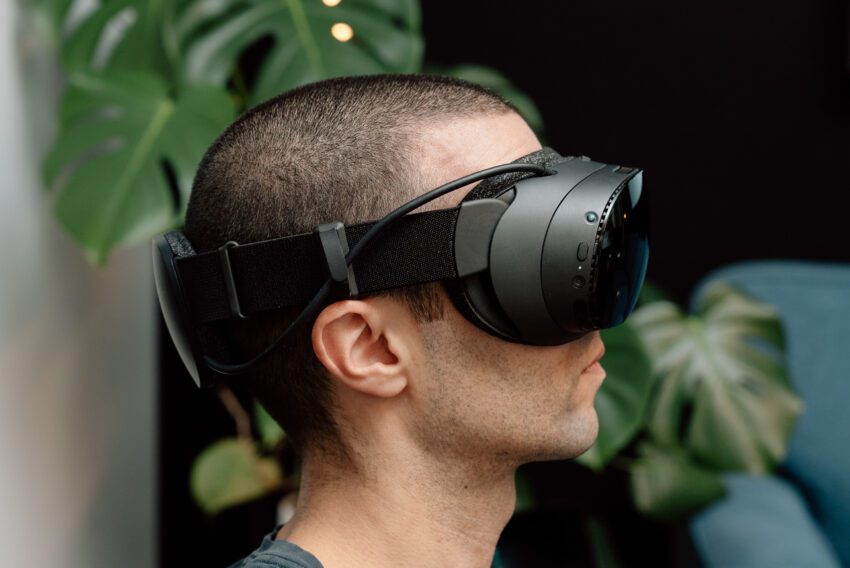
the steam frame has two speakers on Valve’s latest innovation, the Steam Frame VR headset, introduces a unique audio system designed to enhance the virtual reality experience while addressing common challenges associated with audio vibrations.
the steam frame has two speakers on
Innovative Audio Design
The Steam Frame VR headset features a groundbreaking audio design that incorporates dual audio drivers on each side of the head strap. This strategic placement positions the audio drivers near the user’s ears, aiming to deliver an immersive sound experience. During a recent hands-on session at Valve’s headquarters, I had the opportunity to test the headset and found the audio quality to be satisfactory. However, the innovation goes beyond mere sound quality; it also addresses a significant issue in VR gaming—audio-induced vibrations.
Understanding Vibration Cancellation
According to Valve hardware engineer Jeremy Selan, the dual audio drivers serve a dual purpose. While they provide audio output, they also play a critical role in vibration cancellation. In traditional VR setups, audio with strong bass can induce vibrations that affect the headset’s tracking capabilities. This is particularly important in VR, where precise tracking is essential for an immersive experience.
The Steam Frame utilizes outward-facing cameras integrated into the headset for tracking movements. However, when audio generates vibrations, it can interfere with the accuracy of these tracking systems. Selan explains that the dual drivers are “mounted opposite to each other,” which creates a natural vibration cancellation effect. This design allows for improved tracking accuracy, even when users are enjoying audio with rich bass.
Modular Design for Future Adaptability
Another notable feature of the Steam Frame is its modular design. This flexibility allows users to potentially swap out the included head strap for other options that may incorporate different audio solutions. The modularity of the headset opens up possibilities for customization, enabling users to tailor their VR experience according to personal preferences or advancements in audio technology.
The Implications of Modularity
The modular design is significant for several reasons. First, it allows Valve to adapt to the rapidly evolving landscape of virtual reality technology. As new audio solutions and head strap designs emerge, users can upgrade their hardware without needing to purchase an entirely new headset. This approach not only enhances the longevity of the product but also aligns with the growing trend of sustainability in technology.
Moreover, the ability to customize the headset means that users can select head straps that best suit their individual needs. For instance, some users may prefer a lighter strap for extended gaming sessions, while others might prioritize enhanced audio capabilities. This level of personalization can lead to a more enjoyable and comfortable VR experience.
Technical Specifications and Features
The Steam Frame VR headset is designed with several technical specifications that contribute to its overall performance. While specific details about the headset’s resolution, field of view, and refresh rate have not been disclosed, the focus on audio and tracking technology indicates that Valve is committed to delivering a high-quality VR experience.
Audio Quality and User Experience
During my testing of the Steam Frame, the audio quality was impressive, particularly considering the innovative design of the dual drivers. The sound was clear and well-balanced, providing an engaging auditory backdrop to the virtual environments. The integration of the audio system into the head strap also means that users do not need to wear additional headphones, simplifying the setup and enhancing comfort.
Furthermore, the placement of the audio drivers near the ears allows for a more immersive experience. Users can enjoy spatial audio effects that enhance their sense of presence in the virtual world. This is particularly important in gaming scenarios where directional audio cues can provide critical information about the environment and enhance gameplay.
Challenges and Considerations
While the Steam Frame presents several innovative features, there are also challenges and considerations that users and developers must keep in mind. One potential issue is the reliance on the dual audio drivers for vibration cancellation. If the audio drivers are not adequately calibrated or if users opt for third-party audio solutions, the effectiveness of the vibration cancellation could be compromised.
Market Competition
The VR headset market is highly competitive, with established players like Oculus and HTC offering their own advanced solutions. Valve’s Steam Frame must not only compete on audio quality and tracking capabilities but also on price, comfort, and overall user experience. The modular design may give Valve an edge, but it remains to be seen how consumers will respond to the new headset compared to existing options.
Stakeholder Reactions
The introduction of the Steam Frame has garnered interest from various stakeholders in the VR industry. Gamers are particularly excited about the potential for improved audio and tracking, as these elements significantly impact gameplay. Early adopters and tech enthusiasts are also intrigued by the modular design, which aligns with the growing trend of customization in consumer electronics.
Developer Perspectives
Developers are likely to view the Steam Frame as an opportunity to create more immersive experiences. With improved tracking and audio capabilities, developers can design games that leverage these features to enhance gameplay. The modular design may also encourage developers to experiment with new audio solutions, leading to innovative applications in VR.
Conclusion: A Step Forward in VR Technology
The Steam Frame VR headset represents a significant advancement in virtual reality technology, particularly in the realm of audio and tracking. By integrating dual audio drivers into the head strap, Valve has addressed a common challenge faced by VR users while enhancing the overall experience. The modular design further adds to the headset’s appeal, allowing for customization and adaptability in a rapidly evolving market.
As the VR landscape continues to develop, the Steam Frame may set a new standard for audio integration and tracking accuracy. With its innovative features and user-centric design, Valve is poised to make a lasting impact on the future of virtual reality gaming.
Source: Original report
Was this helpful?
Last Modified: November 13, 2025 at 2:38 am
0 views















